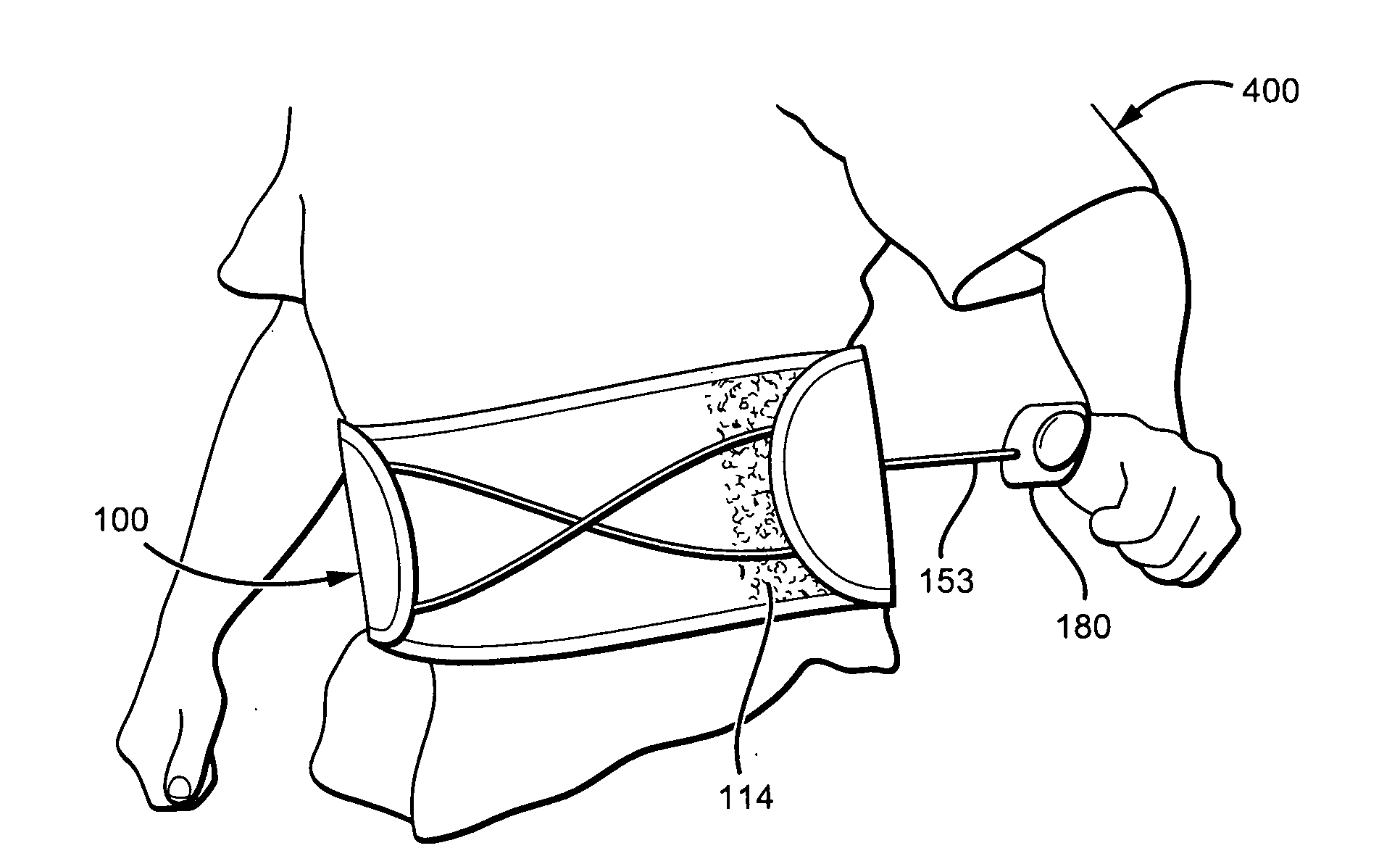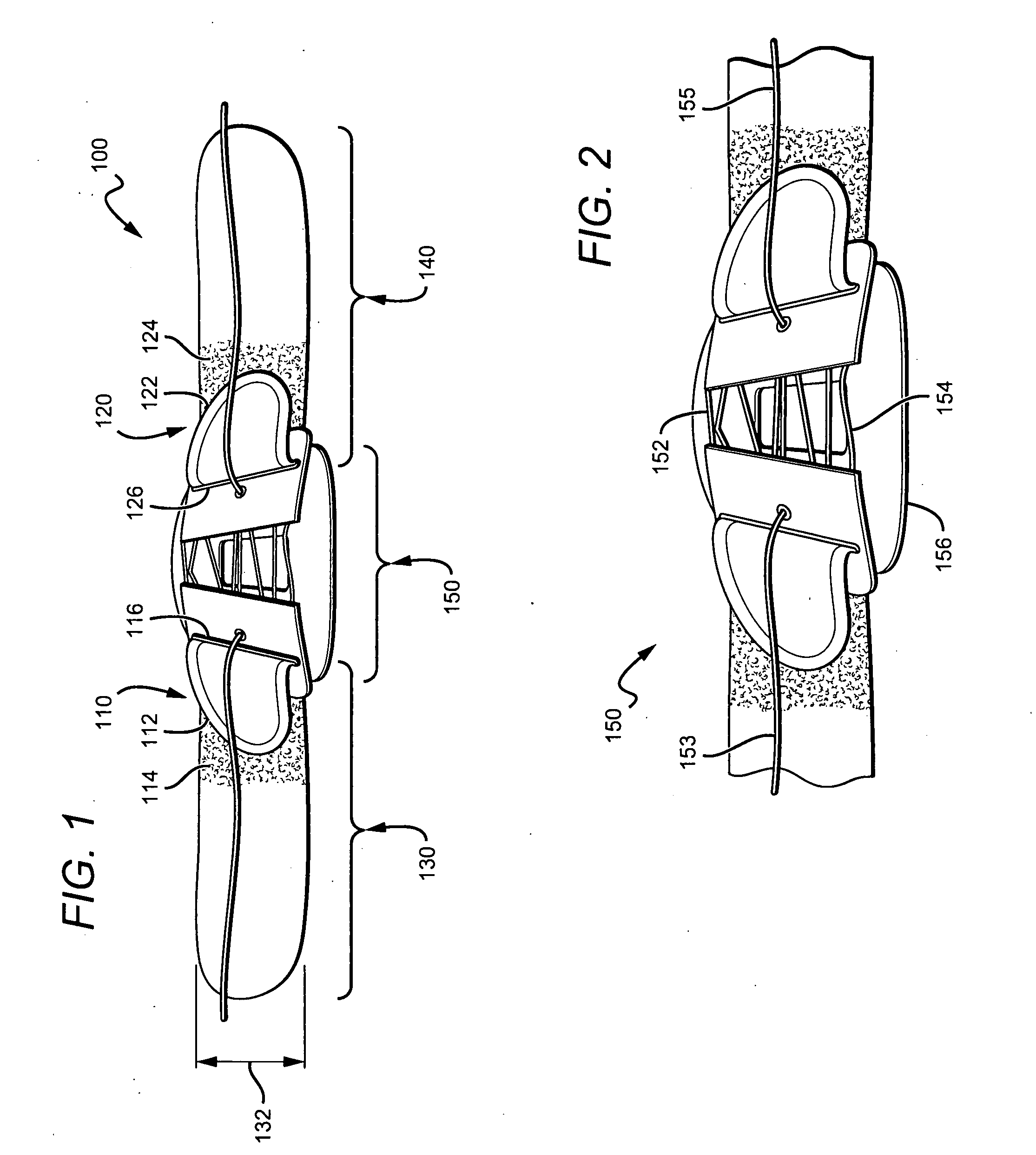Highly Adjustable Lumbar Support And Methods
a lumbar support, high-adjustable technology, applied in the field of lumbar supports, can solve the problems of users not fully tightening the strap, body braces are difficult to appropriately position and fasten, and willis, however, fails to contour to body shapes of different shapes and sizes, so as to increase the mechanical advantage ratio of the mechanism and increase the force of adjustment
- Summary
- Abstract
- Description
- Claims
- Application Information
AI Technical Summary
Benefits of technology
Problems solved by technology
Method used
Image
Examples
Embodiment Construction
[0026]Referring to the drawings to illustrate preferred embodiments, but not for the purpose of limiting the invention, FIG. 1, illustrates one embodiment of a body brace 100 with a first adjustment mechanism 110, a second adjustment mechanism 120, a left side piece 130, a right side piece 140, and a back piece 150.
[0027]First adjustment mechanism 110 is a fold-back adjustment mechanism that adjusts an effective length of left side piece 130. As used herein, an “effective length” is the length of the side piece that acts as the circumference of the body brace when the brace is worn about a wearer. As best seen in FIG. 1, a hook portion 112 of left side piece 130 threads through slot 116 of back piece 150. The hook portion 112 then folds back over a loop portion 114 of left side piece 130 which then mates with loop portion 114 to form a hook and loop fastener. Such hook and loop fasteners are commonly referred to in the art as Velcro™ fastening.
[0028]Preferably, the hook portion cove...
PUM
 Login to View More
Login to View More Abstract
Description
Claims
Application Information
 Login to View More
Login to View More - R&D
- Intellectual Property
- Life Sciences
- Materials
- Tech Scout
- Unparalleled Data Quality
- Higher Quality Content
- 60% Fewer Hallucinations
Browse by: Latest US Patents, China's latest patents, Technical Efficacy Thesaurus, Application Domain, Technology Topic, Popular Technical Reports.
© 2025 PatSnap. All rights reserved.Legal|Privacy policy|Modern Slavery Act Transparency Statement|Sitemap|About US| Contact US: help@patsnap.com



